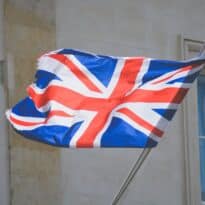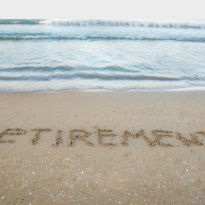Professional Paraplanner’s TDQ (Training, Development and Qualifications) series, is run in conjunction with key support providers, such as Brand Financial Training, and aims to test your knowledge of the financial services market, as part of your overall training goals and exam techniques.
The following questions, which can also be found in our December 2022 issue, relate to examinable Tax year 21/22, examinable by the CII until 31 August 2023.
You will find the answers separately under the Development Zone tab on the Professional Paraplanner website.
QUESTIONS
1. Under which scenario would non-disclosure have taken place?
A. A client tells an IFA about a previous heart condition, but the IFA doesn’t tell the insurer.
B. An employed agent of the insurer does not inform the insurer of the client’s previous heart condition.
C. A self-employed agent of the insurer does not pass onto the insurer a material fact the client had disclosed.
D. The client advised that a previous heart condition occurred 10 years ago, but had actually happened 11 years ago.
2. You are a financial adviser conducting a fact-find with a new client. Which of the following would be regarded as a ‘soft’ fact?
A. Age.
B. Attitude to risk.
C. Income.
D. Liabilities.
3. Sophie is self-employed and a higher rate taxpayer. Her income tax bill for tax year 2020/21 was £12,000 and for 2021/22 it was £19,000. In July 2021, she made a gross pension contribution of £6,000. For the 2021/22 tax year, Sophie will make:
A. two payments on account of £9,500.
B. a balancing payment of £5,800 on 31 January 2023.
C. a balancing payment on £7,000 on 31 January 2023.
D. one payment on account of £12,000 on 31 January 2022.
4. What is the running yield on a gilt with a coupon of 4% with a price of £107.50?
A. 4.3%.
B. 4.0%.
C. 3.72%.
D. 2.69%.
5. One of the main differences between a US Treasury bill and other types of US Government bonds is that they
A. have longer terms.
B. only pay interest once a year.
C. are issued at a discount to their maturity value.
D. are protected from inflation.
6. Scott, aged 64, lives in a large house which used to be two self-contained flats, and which could easily be converted back. If he decides to do this and lets the upstairs flat unfurnished to provide him with additional income, what will be the tax implications of doing this?
A. Rent up to £7,500 free from income tax, Capital Gains Tax (CGT) on sale of flat
B. Rent less expenses liable to income tax, sale of flat potentially liable to CGT
C. Rent tax free, CGT on whole of property when sold
D. All rent liable to income tax, no CGT on sale of entire house
7. Jimmy is a self-employed plumber. His earnings are around £50,000 a year. In addition, Jimmy receives £9,000 per year as rent from a buy-to-let property he owns in Swindon. Jimmy should be aware that:
A. he can deduct maintenance costs and service charges from his rental income.
B. HMRC will treat the rental income as earned income.
C. the rent is treated as relevant earnings for pension contributions.
D. the rent will be subject to class 2 and class 4 national insurance contributions.
8. The following investments into shares have recently been made:
Name: Company Dividend Received
Toby: a basic-rate taxpayer X £90
Rupert: a higher-rate taxpayer Y £90
Simon: an additional-rate taxpayer Z £90
Which of the following is true regarding the taxation of the dividends received?
A. Only Toby and Rupert will benefit from the dividend allowance.
B. Assuming Toby’s dividend allowance is already used, he will have a liability on his gross dividend of 10%.
C. Rupert could have a tax liability of up to £35.42.
D. Simon could have a tax liability of up to £35.42.
9. Tom is receiving benefits from his employer’s group income protection scheme. How will these be treated in relation to his personal tax liability?
A. The benefits will be free of tax if Tom has been a member of the scheme for more than 2 years before receiving the benefits
B. Any benefits will be completely free of any liability for tax
C. They will be taxed in the same way as normal pay
D. The benefits will only be taxed if Tom is still receiving them after 12 months
10. Fiona, age 70, has been assessed as needing care in a care home, and is about to move into a home in Scotland on a self-funded basis. What financial assistance can she expect to receive?
A. Flat rate contributions towards both nursing care and personal care
B. A flat rate contribution towards nursing care only
C. The personal expenses allowance
D. A flat rate contribution towards personal care only





























